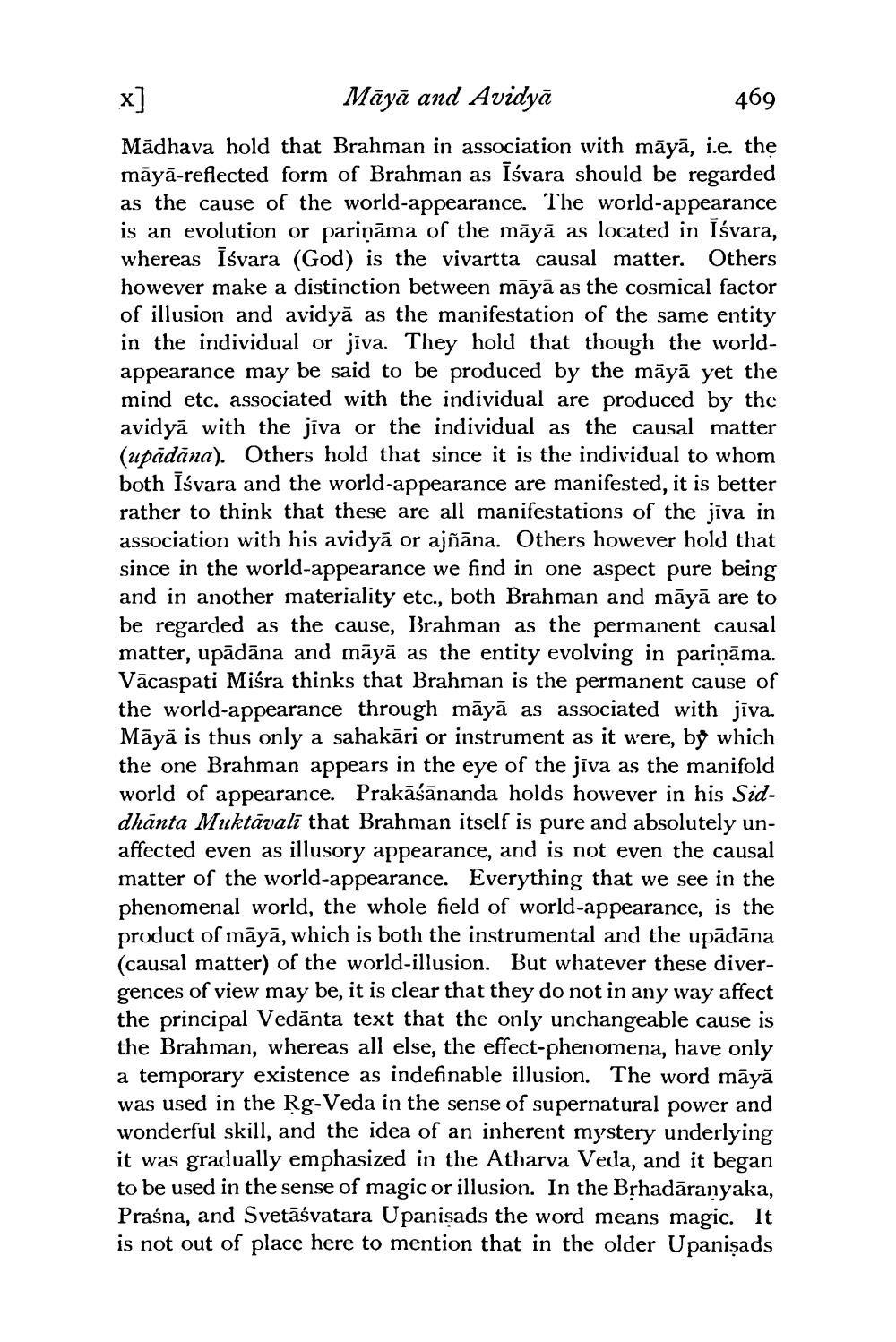________________
Māyā and Avidyā
469
Madhava hold that Brahman in association with māyā, i.e. the māyā-reflected form of Brahman as īśvara should be regarded as the cause of the world-appearance. The world-appearance is an evolution or parināma of the māyā as located in Isvara, whereas īśvara (God) is the vivartta causal matter. Others however make a distinction between māyā as the cosmical factor of illusion and avidyā as the manifestation of the same entity in the individual or jiva. They hold that though the worldappearance may be said to be produced by the māyā yet the mind etc. associated with the individual are produced by the avidyā with the jiva or the individual as the causal matter (upādāna). Others hold that since it is the individual to whom both Isvara and the world-appearance are manifested, it is better rather to think that these are all manifestations of the jiva in association with his avidyā or ajñāna. Others however hold that since in the world-appearance we find in one aspect pure being and in another materiality etc., both Brahman and māyā are to be regarded as the cause, Brahman as the permanent causal matter, upādāna and māyā as the entity evolving in pariņāma. Vācaspati Miśra thinks that Brahman is the permanent cause of the world-appearance through māyā as associated with jīva. Māyā is thus only a sahakāri or instrument as it were, by which the one Brahman appears in the eye of the jiva as the manifold world of appearance. Prakāśānanda holds however in his Siddhānta Muktavalī that Brahman itself is pure and absolutely unaffected even as illusory appearance, and is not even the causal matter of the world-appearance. Everything that we see in the phenomenal world, the whole field of world-appearance, is the product of māyā, which is both the instrumental and the upādāna (causal matter) of the world-illusion. But whatever these divergences of view may be, it is clear that they do not in any way affect the principal Vedānta text that the only unchangeable cause is the Brahman, whereas all else, the effect-phenomena, have only a temporary existence as indefinable illusion. The word māyā was used in the Rg-Veda in the sense of supernatural power and wonderful skill, and the idea of an inherent mystery underlying it was gradually emphasized in the Atharva Veda, and it began to be used in the sense of magic or illusion. In the Brhadāranyaka, Praśna, and Svetāśvatara Upanişads the word means magic. It is not out of place here to mention that in the older Upanişads




